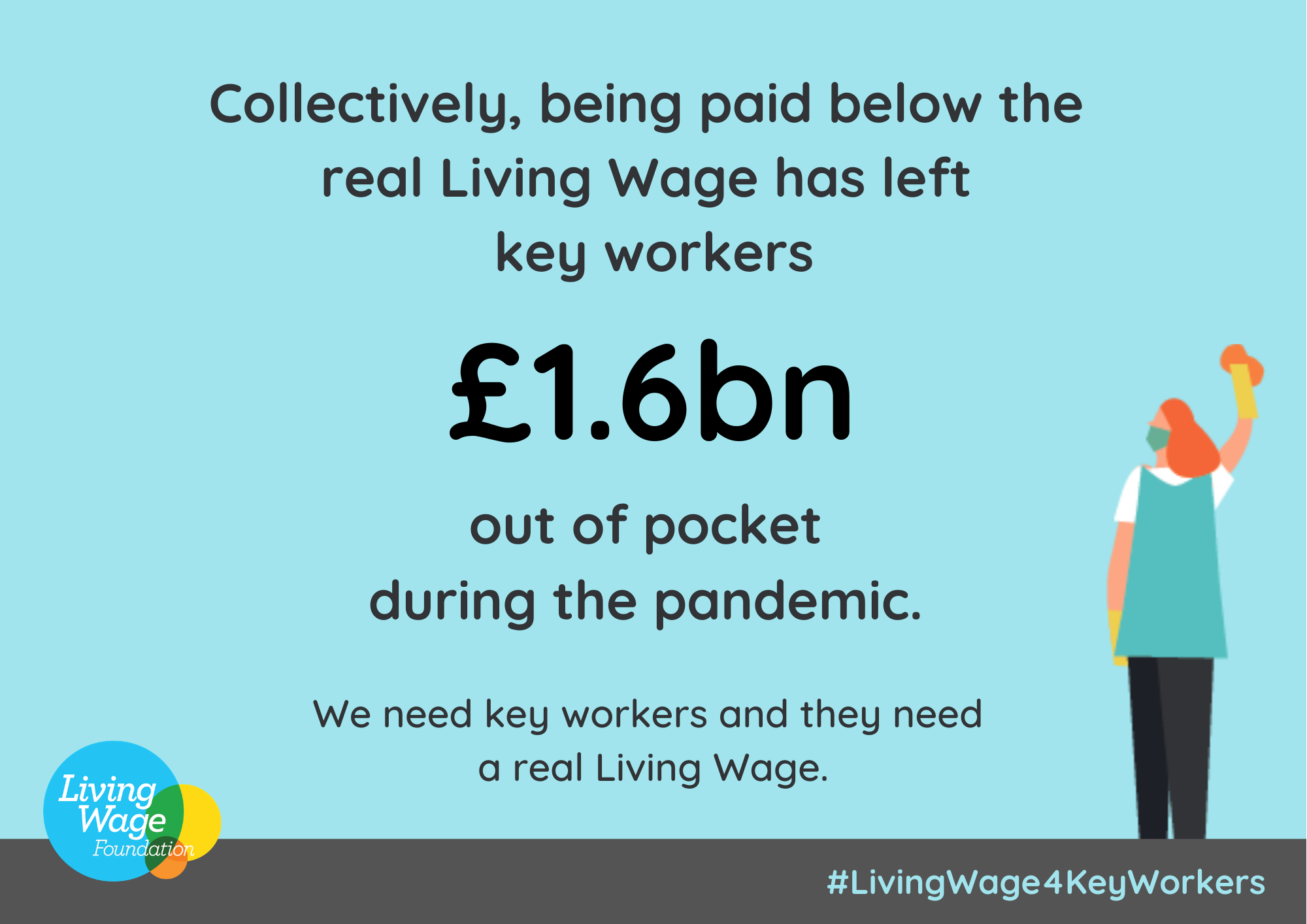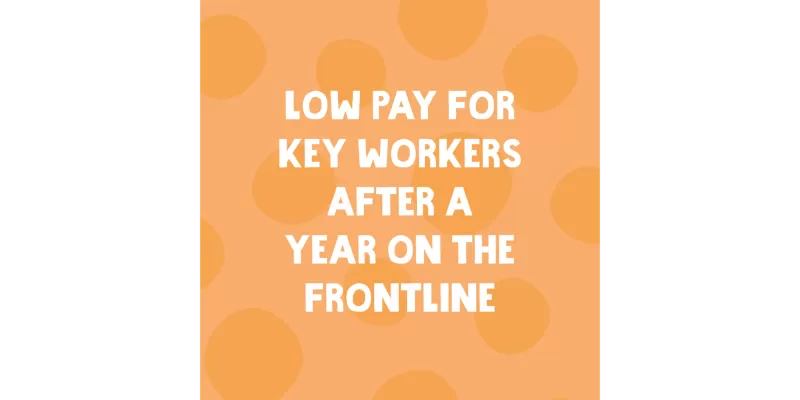- Key Workers experience £1.6bn "Living Wage Gap" during pandemic, and would be, on average, over £900 better off had they been paid the real Living Wage in this period;
- 16% of key workers - 1.7m workers - earned below the Living Wage in April 2020; and
- The key worker industries of health and social care, and food and necessary goods provision contributed the most to the £1.6bn Living Wage Gap, with low pay in these two sectors alone meaning workers have fallen short of the real Living Wage by over £800m.
New analysis by the Living Wage Foundation has found that key workers are £1.6bn out of pocket, as a result of being paid less than the real Living Wage during the pandemic. The analysis used the government definitions of 'key worker' occupations to highlight that, in the year from March 2020 to March 2021, almost a fifth of the UK's key workers were being paid less than what they needed to earn to live, with this disparity amounting to over £900, on average, for each worker paid less than the real Living Wage.

Of the 8 key worker industries, 2 industries disproportionately contributed to the Living Wage Gap - health and social care (where the earning disparity for all workers totaled over £400m, driven almost entirely by social care) and food and necessary goods (where the disparity totaled almost £400m). By contrast, low-paid key workers working in national and local government roles accounted for just £6m of this gap.
The real Living Wage is the only wage rate calculated according to the cost of living. It provides a voluntary benchmark for employers that wish to ensure their staff earn a wage they can live on, not just the government minimum. Since 2011, the Living Wage movement has delivered a pay rise to over 250,000 people and put over £1.3 billion extra into the pockets of low paid workers.
Laura Gardiner, Director, Living Wage Foundation said:
"Our research highlights the cold reality for the 1.7 million key workers earning below the real Living Wage. Over the last year, one that has placed considerable pressure on them, they are close to £1,000 out of pocket, amounting to a £1.6 billion key worker Living Wage gap during the pandemic. It has been an incredibly difficult year for us all. As we look forward to the rest of 2021 and the hope it brings, we must safeguard the workers who have been the backbone of our businesses and society during successive lockdowns. Business signing up to pay the real Living Wage is a good place to start."
BRIEFING: LOW PAY FOR KEY WORKERS AFTER A YEAR ON THE FRONTLINE
This briefing details the financial shortfall key workers have incurred as a result of earning below the Living Wage over the past year. Our analysis finds that 16% of key workers earned less than the Living Wage over the past year.

